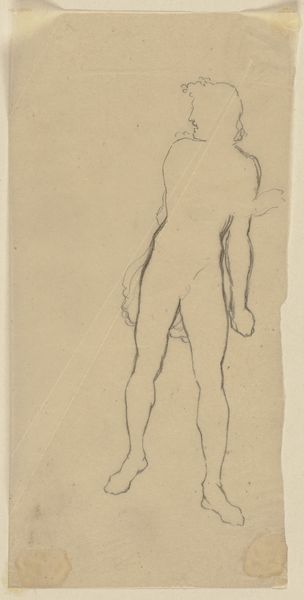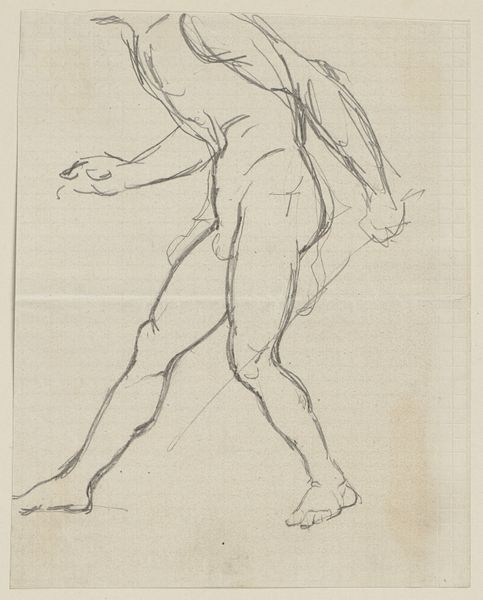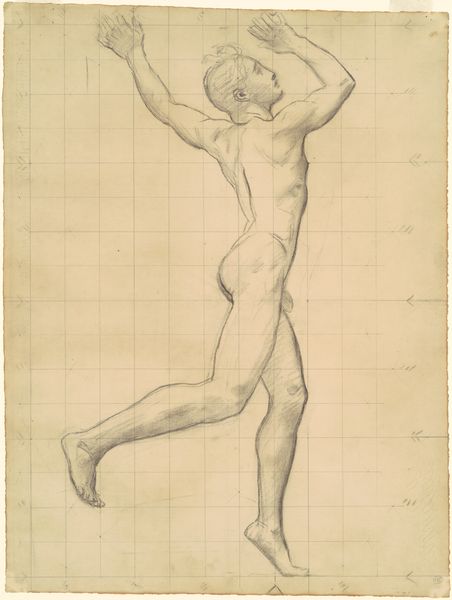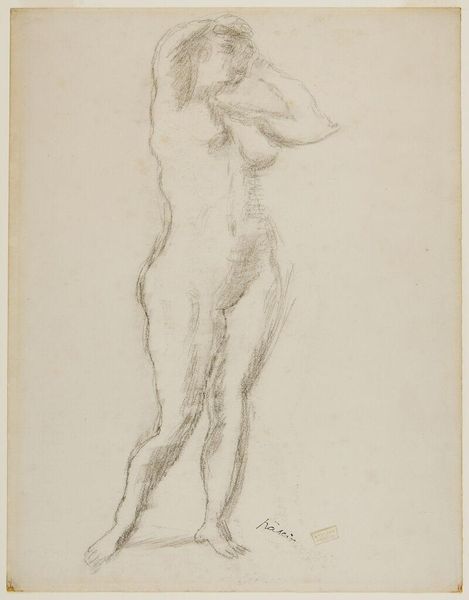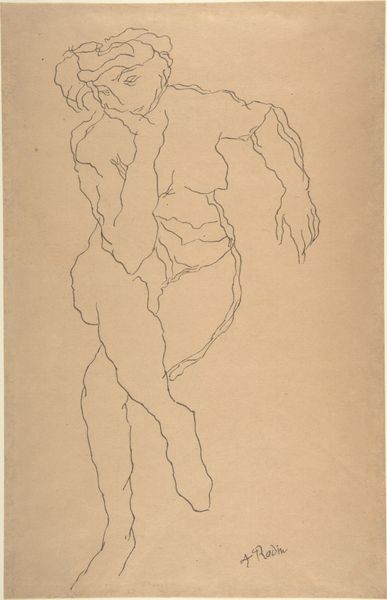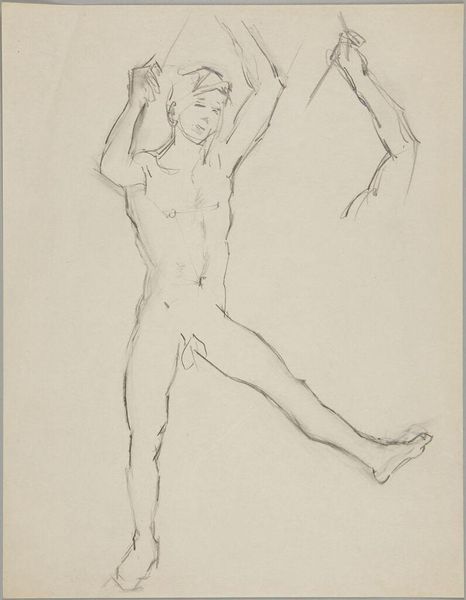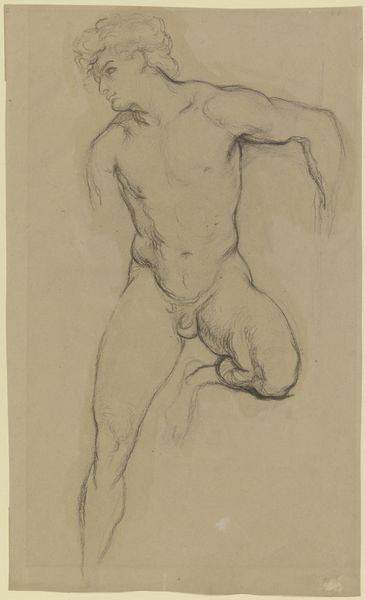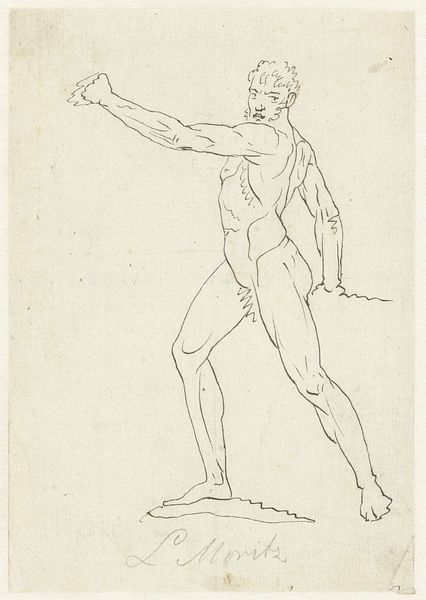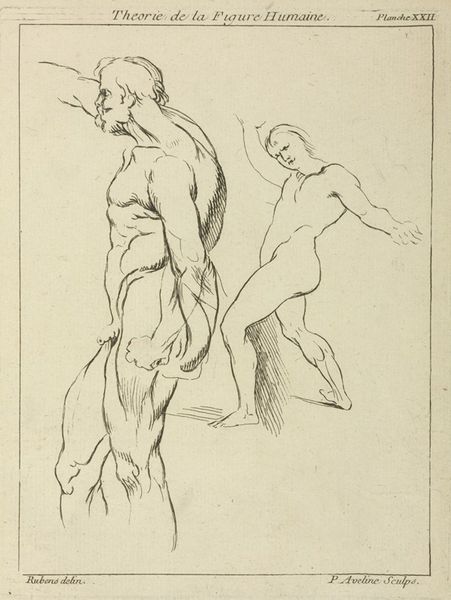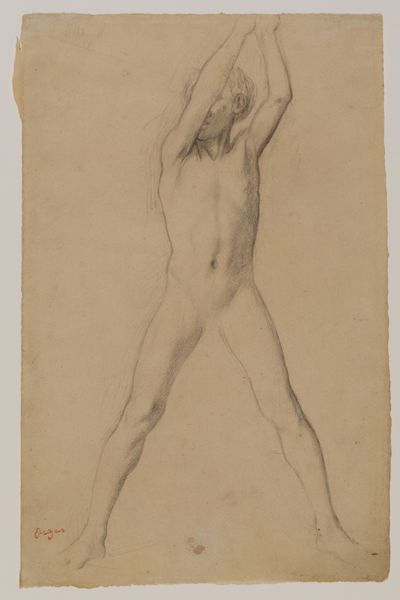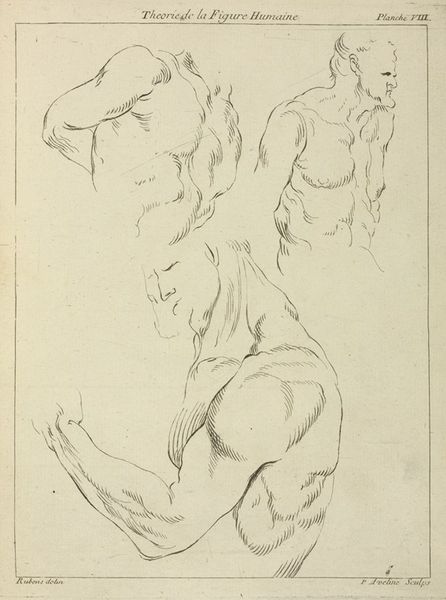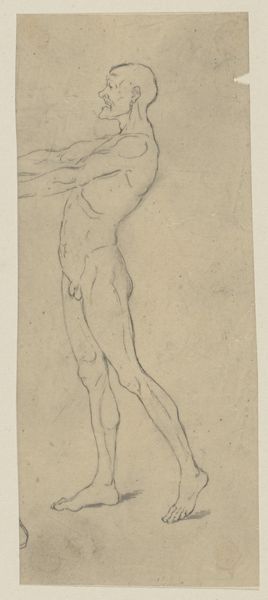
drawing, print, pencil
#
drawing
# print
#
figuration
#
pencil
#
line
#
nude
#
modernism
Dimensions: image: 19 × 8.9 cm (7 1/2 × 3 1/2 in.) sheet: 26.04 × 17.3 cm (10 1/4 × 6 13/16 in.)
Copyright: National Gallery of Art: CC0 1.0
Editor: Here we have Max Weber’s "Sculpture Figure" from 1928, rendered in pencil as a drawing, but also appearing as a print. It's a study of the nude human figure, but very simplified, focusing on the form itself with delicate lines. What jumps out at you? Curator: Immediately, I am drawn to the economy of line. Note how Weber achieves a sense of volume and weight with so few strokes. The dynamism in the pose, almost caught in motion, suggests an exploration of the body's structure, wouldn't you agree? Editor: Yes, the pose seems so casual, yet there’s a definite tension. Does the linearity relate to the print-making aspect? Curator: Perhaps. Consider the flatness inherent in printmaking. Weber might be deliberately eschewing shading, to engage that quality while using a medium as fluid as pencil. The line itself becomes the subject, outlining, defining, and containing the figure. We also note a conscious disregard of the anatomical correctness. Where is it drawing your focus? Editor: It seems his use of line abstracts the human form, almost reducing it to pure geometry at points. The composition focuses the eye to the simplified areas, which contrasts with areas of greater detail like the torso. Is the suggestion of volume still relevant here, despite abstraction? Curator: Precisely. It shows how even in apparent simplification, a rich visual experience is delivered. The reduction encourages the viewer to focus on the elemental relationships between the lines themselves. This engagement with the purely formal, I believe, showcases Weber’s exploration into modernist art and form. Editor: I see. I hadn’t considered that before - a study of form through reduction of the human figure, achieved through minimalist lines. Curator: Exactly. By reducing representational art to it's basic qualities, we can examine the building blocks that compose artistic expression. I appreciate the opportunity to unpack such complexity from what at first glance appears a simplistic artwork.
Comments
No comments
Be the first to comment and join the conversation on the ultimate creative platform.
